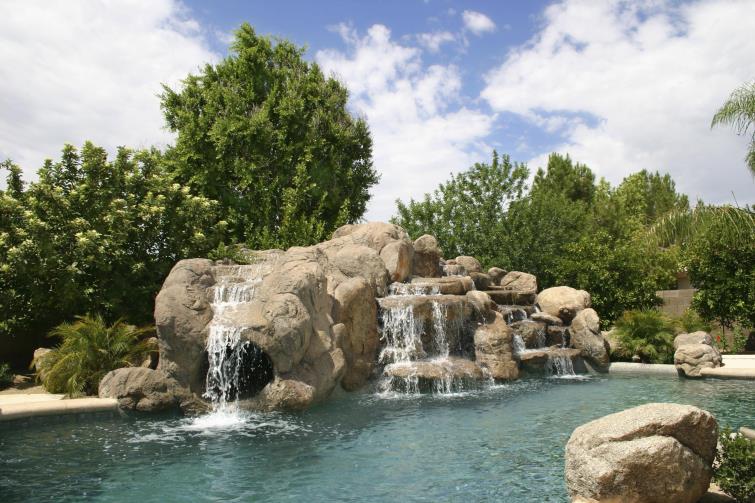What to Know About Caring For Your Pool
March 15, 2015 at 04:29 PM

A swimming pool is a big investment. The proper care of keeping of this investment is crucial to long-term use and enjoyment.
Below are some of the top things to know about pool care:
Filtration
Adequate filtration is essential. The water passes through the filter, is cleaned and returns to the pool. The correct size of pump and filter is critical. The sand in the filter (if applicable) will need to be changed every two years although this time period may vary depending on the factors affecting your pool. Please contact your pool professional for more details because they can assist with this process.
Circulation
Water moves through your swimming pool, distributing chemicals in the water. The aim flow(s) should be directed 30-45 degrees down. This will give you better chemical distribution and the water flow will not affect the performance of the pool cleaner.
Cleaning
Clean the pump, filter and skimmer baskets weekly (more often if it is windy and there are trees or sandy areas around your pool). The filter must be backwashed for 3-5 minutes and rinsed for one minute weekly. If you are using a non-self-cleaning salt chlorinator, clean the chlorinator cell weekly. Also, clean the surface of the pool with the pool skim net when required.
Testing the Water
Test the water on a weekly basis. For reference, are the levels to shoot for:
- Chlorine at 1.0 – 3.0 ppm
- pH between 7.2 and 7.6
- Alkalinity between 80-120 ppm
- Calcium hardness between 150-225 ppm
Have the water analyzed at an authorized pool shop once a month. This will save you time and money in the long run.
Adding Pool Chemicals
Always add the correct chemicals in the appropriate quantities for safe, sparkling and algae-free water. Remember the two golden rules of adding chemicals: only add chemicals to a pool that is running, and only add chemicals to water, not water to chemicals.
Also, DO NOT use a metal bucket when dissolving pool or spa chemicals.
Chemical Adjustment
Chemical manufacturers typically provide recommended dosages, depending on the size of the pool. NOTE: Use leftover chemicals from the previous year before newly purchased ones, but be aware that over time they may have lost some of their punch. Carefully open these older chemicals outdoors, keeping your face clear of the openings to avoid a blast of harmful substance into the eyes and nose.
Be careful of your pool's liner (or colored plaster). Chemicals can easily discolor these, so never allow direct contact between them and the chemicals.
Add the recommended chemicals bit by bit, in small amounts, with the filter running. This is to ensure an even distribution and dilution of chemicals so that subsequent water tests are accurate. Dumping all the chemicals in one spot and then testing the water will skew the results and leave you helpless to proceed (or cause you to proceed incorrectly).
A few key points concerning specific chemicals: The first concerns copper-based algaecide. Again in the interest of protecting the liner or plaster, be sure that pH levels are in balance BEFORE using such algaecide, as a subsequent rapid change in pH can throw copper out of suspension and stain surfaces.
Also, you'll probably need to shock. As always, add chemicals to water. Fill a bucket, then add granular shock gradually, mixing well. Pour the mixture around the edge of the pool with the pump running.
Taking the time to care for your pool properly pays off in easier upkeep throughout the season. Stay tuned here for more pool maintenance tips.